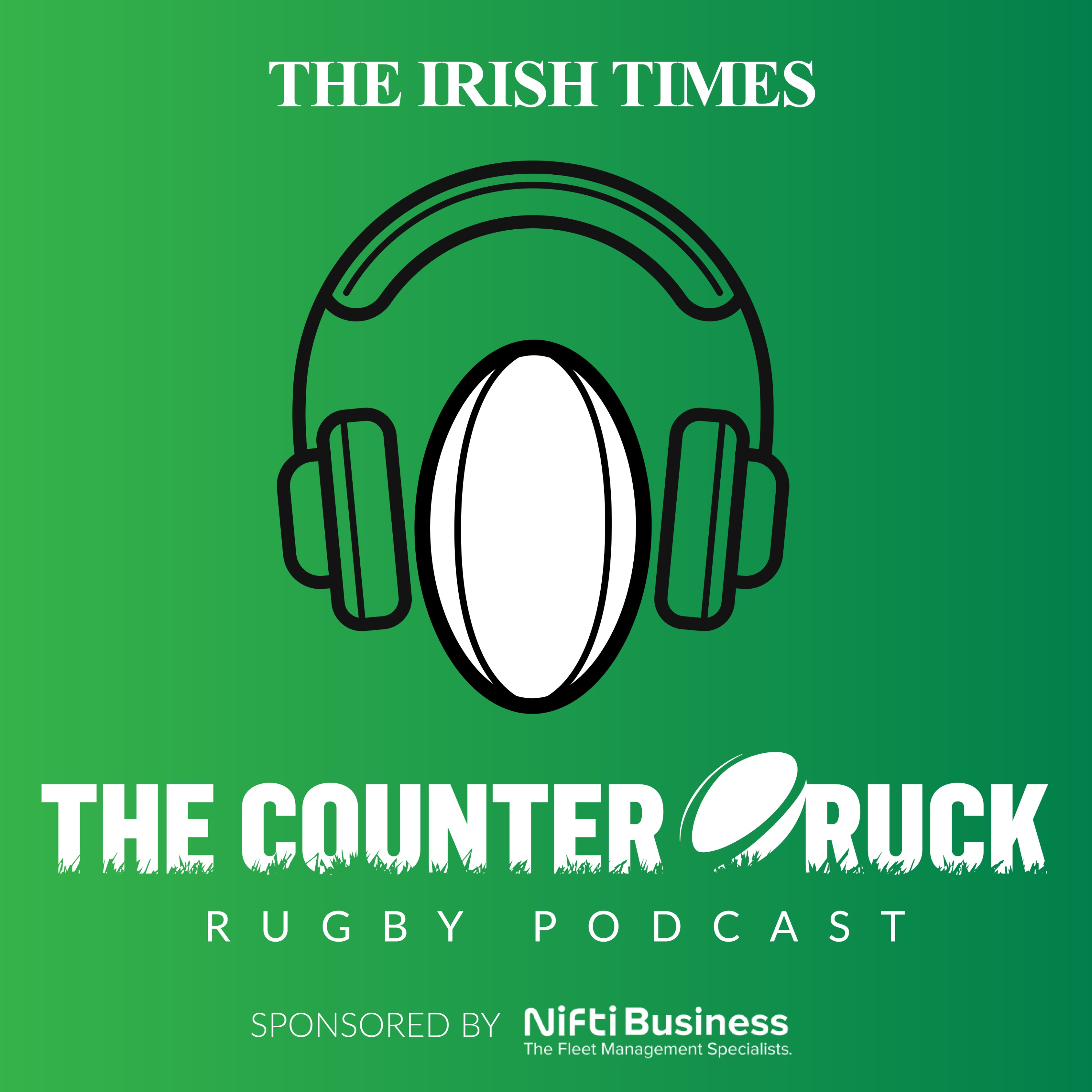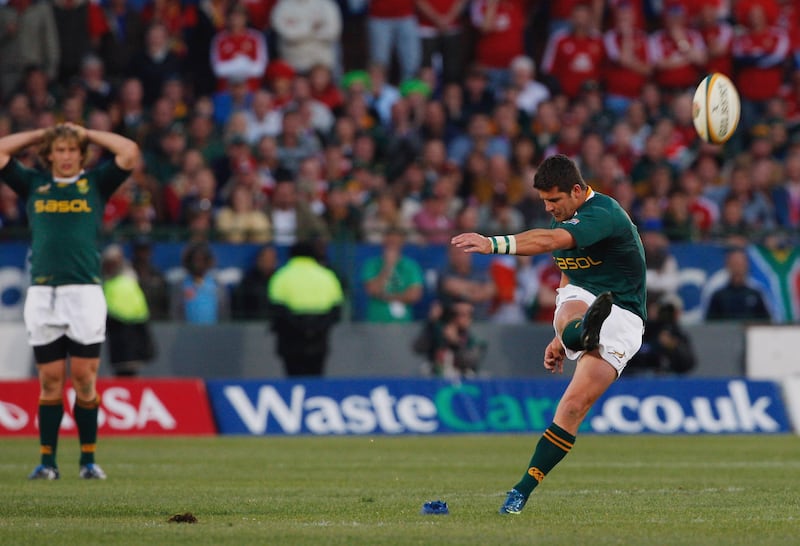There is one thing we can all agree on when we talk about Ross Byrne. He is not a quitter. While there are many aspects of his performance last week against La Rochelle that are noteworthy, the most amazing fact was that somehow he managed to be there at all.
Having spent his entire Leinster and Ireland career deep in the giant shadow of Johnny Sexton, Byrne was handed, when the great man finally departed, a long-term injury. Those rugby gods can be petulant. So Byrne was forced to sit in the stands and watch his brother Harry and Jack Crowley step forward and grab their opportunities. That scenario would challenge the character of any player.
Ross Byrne’s selection and his performance against La Rochelle was a life lesson for us all. It does not matter how many times you get knocked down, what matters is how many times you drag yourself up off the canvas.
Aside from his coaches at Leinster, it seemed as if Irish rugby had written Byrne off. Somehow he found the self-belief to produce a man-of-the-match performance, one that has opened up several possibilities that were close to unthinkable before last weekend’s quarter-final win.
The Counter Ruck: the rugby newsletter from The Irish Times
Farrell and Schmidt announce their opening hands as atmosphere builds in Brisbane
Dan Sheehan’s dad on the torturous Lions selection process and meeting Mack Hansen’s marvellous grandmother
Lions v Australia: Eight Irish players to start first Test, with Beirne at six and Aki benched
First and foremost, his game management of Leinster’s complex attacking system powered his team to score 40 points against the European champions and grab the exceptionally rare opportunity of performing on the hallowed turf of Croke Park in the semi-final.
The opportunity for Leinster players to experience Ireland’s holiest of sporting shrines is a motivation that both Northampton and the Irish rugby public should not underestimate.
With an almost flawless display of place kicking in a swirling wind, Byrne is also firmly back in contention to reclaim the coveted Irish number 10 jersey for the summer series against the Springboks in South Africa. Something very few considered a possibility a week ago.
During last year’s World Cup and in the winning Six Nations team, Ireland’s incumbent outhalf, Jack Crowley, has been immense. His passing, support play and defence have been of the highest standard. The two areas of weakness in his game are his choice of kicks in general play and his goal-kicking percentage from the tee. In this season’s Six Nations he kicked at a 74 per cent success rate, which is low in elite international rugby.

Is Ireland's central contract system broken?
On July 6th, Ireland will play the first Test against the Springboks at Loftus Versfeld in Pretoria. At 1,339m above sea level (or 4,393ft in old money), the Pretorian air has less oxygen in it, so it is literally thinner. At high altitude, a rugby ball meets less resistance and travels far greater distances. This makes goal kicking hugely important.
I first stood on the lush turf of Loftus Versfeld with the Emerging Wallabies in October 1993. Our team was invited to tour South Africa after the release of Nelson Mandela from his prison on Robben Island.

Staged in such an epoch-changing atmosphere in front of crowds starved of international rugby, it was an exceptional life experience. A throwback to a bygone era, our tour was seven weeks long with matches on each Saturday and Wednesday. We traversed the south of the continent in the grand traditions of amateurism, being treated like royalty in Durban, across Zimbabwe, via Victoria Falls into Namibia, down into the Cape and ending up with matches in Pretoria and Johannesburg, known as the high veld.
As a young coach, having just retired from playing, I was appointed chief bottle washer and bag carrier and felt very fortunate, as I was learning every day from my wise boss and future Wallaby coach, John Connolly.
One of my tasks was to take the kickers to the stadium on the day before our matches for a kicking session. At Loftus Versfeld, we arrived moments before the South African kickers had finished their routine. Their kicker’s final three shots at goal were taken from the 10m line inside his own half. All three went over the black dot. We estimated that the ball travelled a distance close to 70m. We were in awe. It is a memory seared into my rugby brain.
In the game the next day, the South African kicker repeated the feat. The lesson taken from that experience was that to win on the high veld, you must be kicking off the tee at a minimum of 90 per cent, because the South Africans will be doing just that and usually better. From Naas Botha, Joel Stransky, Morne Steyn to Handré Pollard (who replaced Manie Libbok because of his low kicking percentages at the World Cup), the Springbok kickers have always been world class.
Across the following 30 years of coaching and observing teams playing on the South African high veld, the 90 per cent goal-kicking target for success has rarely been missed. Occasionally New Zealand teams have played such blistering rugby that goal kicking has been irrelevant, but those are the exceptions and not the rule.
Byrne’s performance at the Aviva last week did Andy Farrell a giant favour as it made the battle for the number 10 Irish jersey competitive again.
As has been the case for the last four years, Farrell is the beneficiary of Leo Cullen’s exceptional talent as a selector. Across the seasons, Leo’s ability to read the mental and physical state of his players has been nothing short of extraordinary. Byrne was not his only laser-accurate selection.
Handing Will Connors the number seven jersey over Josh van der Flier raised many eyebrows. After his performance, Connors’ should be known as “The Axe”, as he backed up his coach’s faith with a scything defensive display that sliced the giant timbers of La Rochelle to the turf.
The greatest influence a coach can have on any game is the players they select. As has been the case in many previous matches across many seasons, Cullen’s selection was the major influence in the demise of La Rochelle.
Farrell must have a 90-plus per cent goal kicker and possibly an axe if Ireland are to triumph on the high veld this summer.














